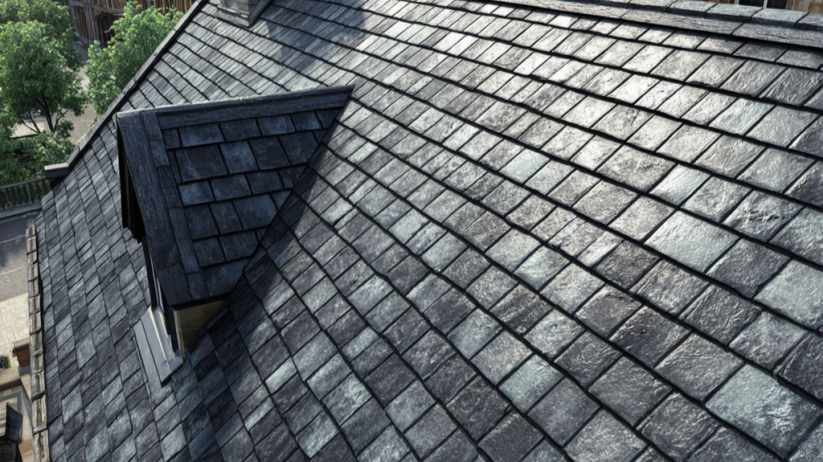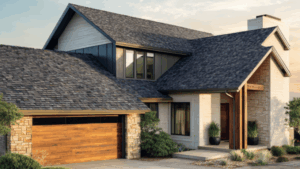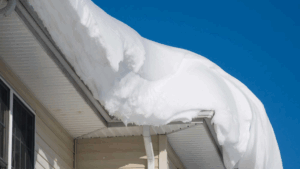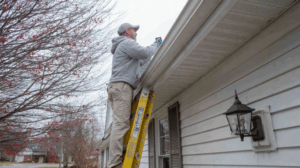There’s something special about living in one of Cincinnati’s historic neighborhoods. Whether you’re in Mt. Adams, Hyde Park, Over-the-Rhine, or East Walnut Hills, you’re surrounded by timeless architecture, handcrafted details, and plenty of stories written into the walls (and roof) of your home.
But here’s the deal — a beautiful historic home isn’t low maintenance, and when the roof starts to fail, it’s not just a repair… it’s a responsibility.
We get a lot of homeowners asking the same question:
“What is the best roofing material for my historic home?”
And it’s a good question. Because in Cincinnati’s historic districts, choosing the best roofing material isn’t just about durability — it’s about finding the right balance between preservation, protection, and long-term performance.
At Cornett Roofing Systems, we’ve been helping homeowners navigate this exact challenge for over 30 years. So if you’re planning a historical roof restoration, or looking into roofing options for historic homes, here’s what you need to know.
What You’ll Learn:
- Which roofing materials work best on older homes in Cincinnati
- What to expect from historic preservation rules and approvals
- Pros and cons of popular materials like slate, metal, and tile
- What makes roofing a historic home different than a modern one
Need help now? Schedule a free inspection. We’ll take a look and give you honest, experience-backed advice — no pressure.

Why Roofing Material Matters More in Historic Neighborhoods
If your home was built before the 1940s, it’s likely sitting under a roof that’s already been replaced once — maybe more. And depending on where you live in Cincinnati, you can’t just install any old shingles and call it a day.
Historic district rules often require you to match the original roofing material or get approval for any changes. Add in Ohio’s weather — hail in the spring, freeze-thaw cycles in winter, and brutal humidity in the summer — and your roofing choice starts to matter a lot more.
So, when we talk about the best roof material, we’re talking about:
- Something that meets your district’s appearance guidelines
- A roof that won’t cave under the next storm or heavy snow
- Materials that won’t bankrupt you or need replacing every 15 years
- And ideally, a solution that makes your historic home look even better
Before You Start: What to Know About Roofing in Historic Districts
Don’t Skip These Steps — It’ll Save You Time (and Headaches)
Roofing a historic home means jumping through a few more hoops — and that’s not a bad thing. It just means you need a clear plan and a contractor who knows the drill.
Here’s what we walk our clients through before any project begins:
| Step | Why It’s Important |
| Check the district rules | Cincinnati’s historic boards often require a Certificate of Appropriateness before work begins. |
| Know what’s allowed | Certain roofing materials, colors, and styles are restricted — you can’t always go modern. |
| Understand your structure | Older homes can’t always support heavier materials without extra framing. |
| Set a realistic budget | Historic roofing isn’t cheap — but it can last 2–3x longer than standard shingles. |
| Pick the right partner | Work with a roofer who has experience with historical roof restoration, not just asphalt replacements. |
We’ve done this process across dozens of historic Cincinnati homes, and we’re happy to help walk you through it — approvals, material selections, and all.
Let’s Talk Materials: What’s the Best Roof for Historic Homes?
This is the part where your decision can either save you decades of hassle or create a whole new set of problems. Let’s break down the most common roofing options for historic homes in Cincinnati — what they look like, how they perform, and whether they’ll pass a preservation board review.
1. Natural Slate Roofing
If your home originally had slate, this is your best match.
- Lifespan: 75–100+ years
- Style: Classic, authentic, high-end
- Weather Performance: Excellent (hail, snow, fire, you name it)
- Cost: $$$$
- Downsides: Heavy and expensive; not every home’s structure can support it
We love natural slate. It’s what most of these homes were originally built with. If your home can handle the weight and you’re planning to stay put, this is an investment that pays off for generations.
2. Synthetic Slate Roofing
Looks like the real thing, but lighter, less expensive, and often approved.
- Lifespan: 40–50+ years
- Style: Nearly identical to natural slate
- Weather Performance: UV stable, impact resistant, and long-lasting
- Cost: $$$
- Downsides: Needs approval — but usually gets it
Synthetic slate is a go-to for homes that can’t carry the weight of real stone. You get the look of a historic roof without the structural upgrades or four-figure-per-square costs.
3. Metal Roofing (Standing Seam or Metal Tile)
Historically accurate in many cases — and unbeatable in performance.
- Lifespan: 50–70 years
- Style: Standing seam, metal tile, or stamped slate profiles
- Weather Performance: Excellent in every season — especially hail and high wind
- Cost: $$$
- Downsides: May not be a match for all architectural styles
Looking for longevity and authenticity? You’ll want to read our full Premier Guide to Metal Roofing to see how it performs in wind-prone areas like the Midwest. Spoiler: metal often outlasts everything else — especially when manufactured in-house like we do at Cornett Roofing.
4. Clay or Concrete Tile Roofing
Great for some styles — not for every home.
- Lifespan: 50–100 years
- Style: High-profile look — fits Mission, Tudor, or Mediterranean styles
- Weather Performance: Holds up well, but clay can crack under hail
- Cost: $$$$
- Downsides: Very heavy, expensive, and not common in Cincinnati
If your historic home was built with tile, you may want to stick with it. Just be prepared for the structural reinforcement and extra labor that comes with a tile roof.
Why Roofing a Historic Home Takes More Than Just Good Shingles
Roofing a new build? You can use stock materials and cruise through installation. Roofing a historic home? Totally different ballgame.
Here’s what you’re dealing with:
- Complex rooflines — Dormers, steep pitches, original flashing
- Structural limits — Roof decks that weren’t built for modern materials
- Visual compliance — The city (and your neighbors) care about how it looks
- Legacy materials — You can’t slap on asphalt and call it a day
Want to explore more on how to choose the best roofing material based on long-term performance and weather resistance? Check out our Best Roofing Material for Midwest Homes & Offices blog for a side-by-side breakdown of all major roof types.

Cincinnati Historic Roofing FAQs
What is the best roofing material for historic homes in Cincinnati?
The best roofing material for historic homes in Cincinnati is typically natural slate, but synthetic slate and metal roofing are excellent options if the structure or budget doesn’t support real stone.
Are modern roofing materials allowed in Cincinnati’s historic districts?
Modern materials like synthetic slate and metal tile are allowed in many Cincinnati historic districts — as long as they closely match the original roof’s appearance and get pre-approval.
Can I put a metal roof on my historic home?
Yes, you can put a metal roof on your historic home if the material fits the style and passes district review. Many homes originally had standing seam or stamped metal roofs.
Do I need a permit to replace my roof in a historic district?
Yes. A roof replacement in a Cincinnati historic district requires a Certificate of Appropriateness and likely a material review by your local preservation board.
How much does a historic roof replacement cost?
A historic roof replacement typically costs more than a modern asphalt roof — but it also lasts two to three times longer. Expect to invest in long-term performance.
Will Cornett Roofing help with approvals and documentation?
Yes, we handle the full process — from historic material recommendations to working with local boards on your behalf. Historical roof restoration is what we do.
Final Thoughts: Preserve What Matters — Without Compromising Performance
Replacing a roof on a historic home is one of the most important upgrades you’ll ever make. It protects the integrity of your structure, maintains your home’s character, and — if done right — can add serious value.
At Cornett Roofing Systems, we specialize in roofing options for historic homes across Cincinnati. We bring together old-school craftsmanship, modern materials, and hands-on experience navigating the rules of restoration.
Schedule your free inspection today, and let’s find the best roof material to protect your home’s future — while honoring its past.





